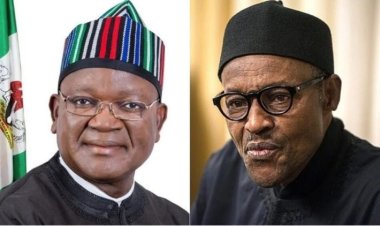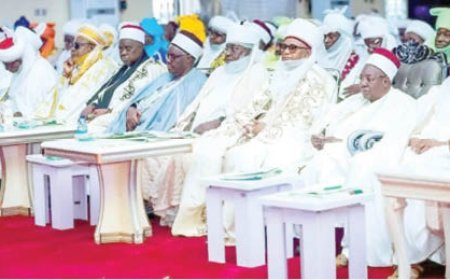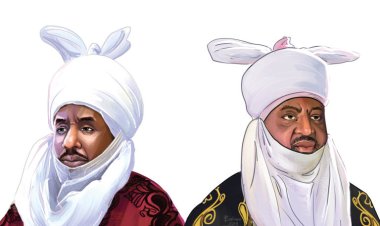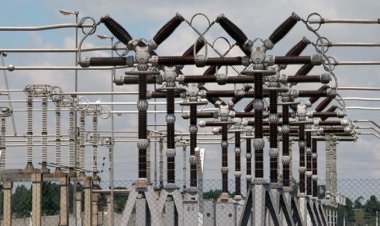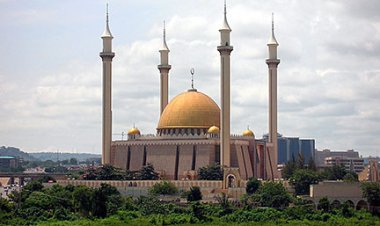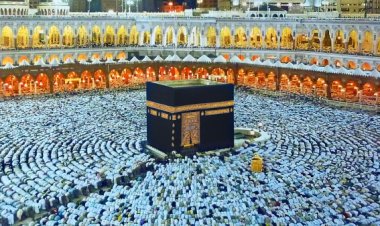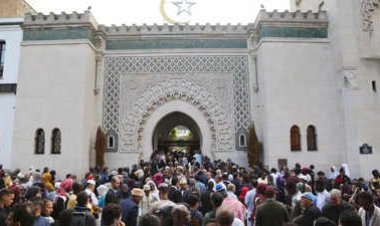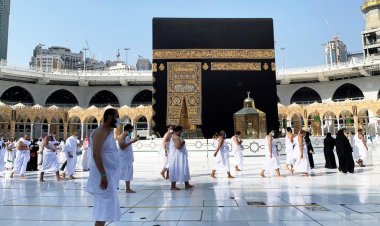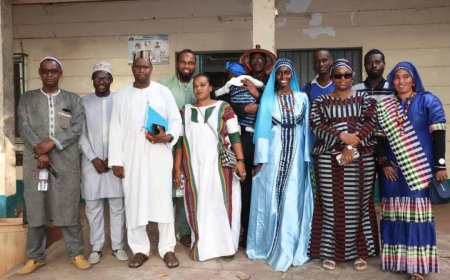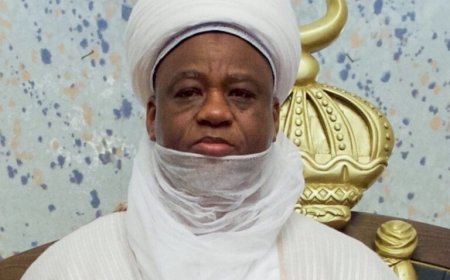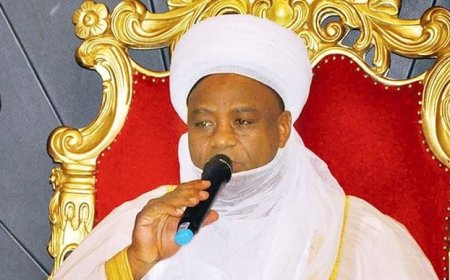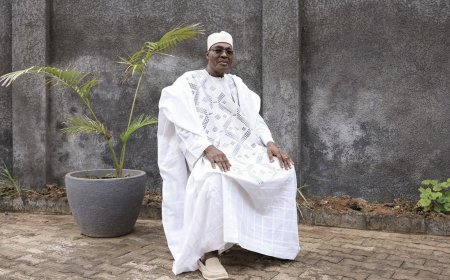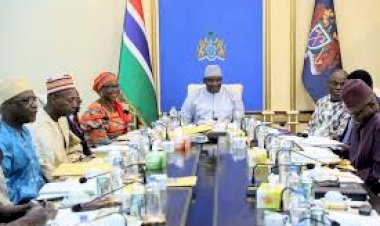SULTAN ATTAHIRU THE FIRST & THE HIJRA TO THE EAST
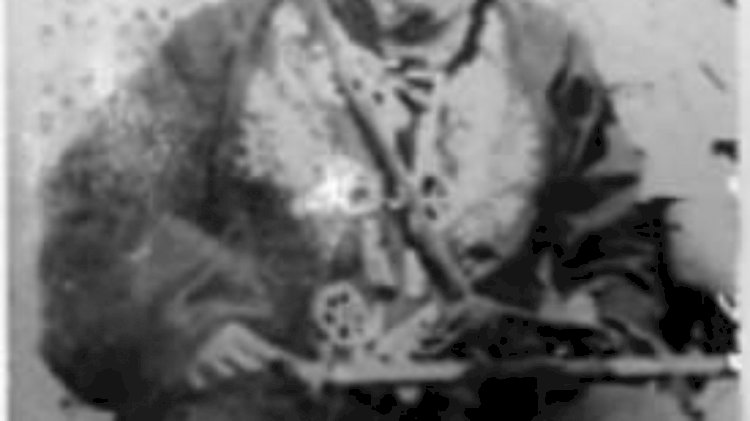

by Shaykh Muhammad Shareef bin Farid
On the early morning of the 15th March 1903, the British military were outside the gates of Sokoto. The Caliph Muhammad Attahiru ibn Sultan Ahmad Zaruku ibn Sultan Abu Bakr Atiku ibn SHEHU Uthman Dan Fodio; came out with his army of about 6000 men. The Muslim army was divided into three groups: the center group was led by the Caliph; the left flank was led by the Sarkin Rabah, Ibrahim; and the Marafa Muhammad Maiturare led the right flank. 1
When the British started firing their Maxim guns, they had immobilized the Muslim forces within 20 minutes. By 9:30 a.m. resistance from the Caliphate had been broken, with about 100 Muslim were killed and none of the British were killed. After this initial defeat the Caliph, the Ubamdoma, the Chief Judge of Adamawa Mudi Abdu, his son the Supreme Justice Ahmed ibn Mudi Abdu, the Dan Maji, the Dan Magaji, the Dan Waziri, the Sarkin Kwoni, and the Madaki – were among the officials who accompanied Attahiru on the hijra towards the east. 
Tens of thousands of the common people joined the Caliph Attahiru on his hijra. This was the cause of the city being completely deserted when the British column marched into the city at 11:00 a.m.. 2
Those who failed to join the hijra the to the east and decided to collaborate with the British, were Waziri al-Bukhari, the Galadima, the Marafa, Amir of the army and the Magajin Gari. 3. They met together on 21 March 1903 and elected Muhammad ibn Ali ibn Bello as their new ‘sultan’. Lugard, the real leader, then gave the new ‘sultan’ a turban and a gown, and he officially recognized his authority. According the Adeleye, the new ‘sultan’ was :
”…deprived of political control over the emirates. The all-important right over appointment and deposition of Amirs was formally transferred to the British. Thus, the Caliphate’s central government was dissolved and with it the political obligations and subservience of the Amirs of Sokoto. The Sultan was in fact no more than and Amir of Sokoto.” 4
Meanwhile the legitimate Caliph Muhammad Attahiru was still alive and leading an ever-increasing number of people towards the east. Lugard had earned the hostility of the common people of the Caliphate to European rule. The people, as has been demonstrated, were well aware of the prophecies of the founder of the Caliphate and being a committed Islamic community, in times of turmoil they reverted back to the Islamic ideals upon which the Caliphate was originally built. The scholars and notables who had collaborated with the Europeans had in one day destroyed the very foundations which had been established by Shehu Uthman Dan Fodio, Abdullahi Dan Fodio, and Muhammad Bello.
In the few months following the fall of Sokoto, the British were confronted with the reasserting of the basic unity of the Caliphate, symbolized by Caliph Attahiru. Thus, Muslim resistance to the Europeans was resumed with a vehemence and tenacity of purpose which threatened the establishment of British power. Its immediate and fullest expression was in the hijra of Attahiru the Sarkin Sudan. The people began to recall the song of the Shehu, ‘the Song of the Journey to the East’; and the vision of the Shehu when he saw that: “The people of the ribats and their successors, the true followers of the Shehu, would go on the journey to the east guided by the light and baraka of the Shehu.” 5
Thus, to all those who remained loyal to the ideals of the Shehu and the Caliphate their resistance was canalized into one mass movement which gave expression to British opposition. Regardless of what the British thought of their new puppet ‘sultan’ or even what the collaborators knew about him, the masses saw Caliph Attahiru as the revolutionary leader whose hijra threatened to invalidate all the efforts which Lugard had become so proud.
From March to July 1903 the Caliph created an epic movement which, even the colonial officers who harassed them admitted, had an element of fascination about it. It was said that the mass movement hymned the Shehu’s ‘Song of the Journey to East’ as a way of demonstrating the baraka (spiritual blessings) of the Shehu was with them. Adeleye captures the spirit of this movement when he said: “More important to the history of the fall of the Caliphate, however, was the mass movement to which his hijra gave rise. The spontaneity with which his subjects in the emirates – across section of all classes of society – flocked to join his banner, confirmed where their real allegiance lay.” 6
On March 25 the Caliph Attahiru sent letters in all directions, condemning those who collaborated and accepted the rule of the disbelievers, declaring his objective to make the hijra eastward to the place where the Shehu had promised them. The proposed destination was the Blue Nile as had been foretold by the Shehu. People responded to his call in large numbers. 7
About this the Shehu said:
”Izan sarki Musulmi zashi makka
akayi muna addua amushira kaya.”
“When the ruler of the Muslims goes to Mecca
We must pray, and make ready our goods to go with him.”
The popular appeal enjoyed by the Caliph’s hijra arose from the beliefs among the masses of the perpetual baraka of Shehu Uthman Dan Fodio and their absolute dissatisfaction with the rule of the English Christians. They saw Caliph Attahiru as the Imam of the Caliphate who would save the jama`at of the Shehu from disintegration. Thus, when the Caliph arrived at Kutarkushi on March 31, Abubakar, the Amir of Katsina sent him messages warning him of the nearness of Lugard and his forces and he sent him large amounts of provision for his people. This support was given from many of the emirates in a secret way in order to keep the Christians from knowing his whereabouts. 8
The Shehu said:
”Zama kasan zama domin larura
akoi guzuri ku basu ku samu lada
”If any of you stay at home, staying of necessity, if you have edibles
give to those who make hijra , you will be rewarded”
This demonstrated the on-going loyalty that the notables as well as the common had for Caliph Attahiru. While the Caliph moved eastward the British followed close behind. At every town or village the Caliph paused, hordes of people joined his hijra. Those who could not join would supply the people with foodstuffs, fresh animals and clothing. Whenever the British came upon those same villages they would either find that they had been completely evacuated or the people refused to sell food to them. 9
Adeleye points out: “At a village called Karigi, for instance, the inhabitants did not just refuse to sell food to Crowley’s column but proceeded to shoot arrows at them when they attempted to search their houses. At another village called Tudun Wada the gates were shut and the walls were lined with bowmen ready to give battle. All the towns repeatedly reiterated their resolve to have nothing to do with the white man, while their chiefs, leading the revolts, conveniently blamed the uprisings on the peasants.” 10
The British columns continued to harass the Caliph, whose entourage increased at a rate which caused alarm among the Europeans. The Caliph sent emissaries among all the lands telling people not to sit in peace under the disbelievers, but to join him not in a war against the whites, but in a hijra to Mecca or to Adamawa. As he proceeded eastward and his following increased, notables as well as the plebeians flocked to him with their families and goods. It is said that even the blind and lame joined hoping that the Caliph would take them to meet the Mahdi. 11
The Shehu foretold in his ‘Song of the Journey to the East’:
”Da salihai da muminai ku tashi mu roki ubangizinimu shi kaimu tari
Munafikai da kafirai ku zamna ku ber murna wuta atashiku baia Mu roki ubangizi sarki sarota izan muna tashi mu yi guzuri da asna
Da matanmu da yayanmu da bai du da dukoki musulmi zama tari
Makafinmu guragunmu da tsofi wani kaki zulumi duka zamu tari Mu kua taffi babu kishirua babu yunwa shikin dadi muna murna da juna
Da yi allah da albarkar waliya ya kaimu gari da ankaraba da kowa.” *****
”You who are upright and believers rise up we pray that our Lord will let us go together
You hypocrites and disbelievers stay put stop rejoicing for the Fire will devour you later We pray that our Lord, King of the Cosmos when we leave, that we get the goods for our journey away from the heathens
With our wives, our children, our servants and our goods, we Muslims will go together
And our blind, our lame, our aged and whoever is oppressed, we will all go together
We will travel too without thirst or hunger and rejoice in that which is sweet one with another
By the power of Allah, and the baraka of our saint (Shehu Uthman)
He will bring us to the place (the Nile) where a share will be granted to all.”
Lugard’s policy had been to harass the multitudes gathering round the Caliph. Around May 7 Attahiru and his people reached Missau where they met with the Amir Ahmed ibn Muhammad. In the same place was the descendent of Umar al-Futi of Segu, Bashir ibn Ahmed ibn Umar. This augmented the forces of Attahiru so much that it caused the Col. Sword to write; “Attahiru’s following is immense; his people are said to take from sunrise to mid-day passing. The Sarkin Muslumi has now many thousands of people with him. The whole population from Kano to the Gongola have joined with him.” 12
On May 17 a British column caught Attahiru at Gwoni and scattered part of his forces. From there Caliph Attahiru continued on the Birmi being chased by more than five columns of British forces. In the middle of June, Attahiru arrived at Burmi, where his forces joined with the Mahdists forces of Jibrila ibn Gaina. Thus, in Burmi there were the Qadiriya, Tijaniya and Mahdiya forces joined together under the banner of Attahiru. The forces at Burmi represented at least four different Caliphates. Among them were the Caliphate of Segu, the Caliphate of Massina, the Mahdists Caliphate of Hayatu led by Malam Jibrila, the Mahdists Caliphate of Rabih and the Sokoto Caliphate.
The Battle of Burmi is reputed to be one of the greatest battles the British had to fight. On the 27 July at 11 a.m. the British began their offensive against Burmi. Several times the British tried to enter the town but were driven off with arrow fire from Muslim freedom fighters. The morale of the Muslims in Burmi was unbroken in spite of the total use of the Maxim guns and canons by the British. Even the women played their part, bringing food and water to the warriors.
By 1 p.m. the British had managed to get in the town and burn homes and buildings. However, the Muslim freedom fighters were undaunted and managed to drive them out. During this skirmish, one of the British officers, Major Marsh, was killed. And hour later another British force entered the town, while another charged the walls. The defense of the Muslims in Burmi was so strong that Col. Sword was forced to send for more reinforcements.
During this lull the Caliph Attahiru gathered his officials. Among them was his three sons, the chief judge Ahmed ibn Mudi Abdu, his father the Alkali Mudi Abdu, the Magajin Keffi, the Amir of Bida, the Amir of Missau, the Galadima, Bashir ibn Ahmed of Segou, and his cousin Alfa Hashim Tal. In front of these witnesses the Caliph informed his two oldest sons to return to Sokoto to help straighten out matters there. He then took the hand of his youngest son the Mai Wurno, Muhammad Bello, who was nicknamed Dan Sokoto and appointed him as the Caliph to lead the hijra to the banks of the Nile. 13 It is not surprising that like his father Muhammad Bello held the post of sarkin sudan. The title Mai Wurno denoted that he was the Amir of the ribat of Wurno. The official who held this post was given the title Sarkin Sudan and was expected to be the next in line for the position of Caliph of the Sokoto Caliphate.
At 5:30 p.m. the British faced the last desperate struggle near the mosque of Burmi. It lasted for about an hour, after which the mosque stood in ruins. More than 600 Muslim bodies lay dead, testifying to the unyielding and courageous nature of their resistance. Among them lay the body of the twelfth Caliph of the Sokoto Caliphate Muhammad Attahiru ibn Ahmed Zaruku ibn Abu Bakr Attiku ibn Shehu Uthman Dan Fodio. One of the British officers William Wallace said about the bravery of Attahiru and his men:
”Our recent experiences show that the poorer people and the numerous chiefs collected at Burmi, knew how to die when facing the enemy. . .our success was due the great stopping power of our bullets, mark IV, which was one of the principle factors leading to our success. Without this ammunition our success would have been doubtful.” 14
There is no doubt that the Muslim warriors of Burmi demonstrated fortitude and relentless courage against great odds. However, the cause for which they were fighting was much greater than themselves. It was not land or any material items which they were fighting for. These were men and women of Allah who had been so transformed by their belief in Allah, that their lives, wealth and homeland became insignificant in comparison.
Those who managed to escape in order to continue with the hijra to the east were the new Caliph Muhammad Bello Mai Wurno, Ahmedu ibn Salih the Amir of Missau, Alfa Hashim Tal, the chief Alkali of Sokoto Ahmed, and his father about whom this study is about Alkali Mudi Abdu. Of these Ahmedu made it to eastern Sudan where he founded a village called Hadija. 15 Alfa Hashim Tal made it to Medina in the Hijaz where he settled and continued to write many Islamic works; and became among the close advisers of King Abd’l-Azeez ibn Saud. 16
The new Caliph Muhammad Bello Mai Wurno made it to the Blue Nile in 1906 with thousands of followers loyal to the Sokoto Caliphate. There he founded a village called Mai Wurno, where the faithful supporters of Shehu Uthman Dan Fodio still reside. 17
FOOTNOTES:
1. R.A. Adeleye, Power and Diplomacy in Northern Nigeria, 1804-1906, London: 1971, p. 282.
2. Ibid., p.283.
3. Murray Last, The Sokoto Caliphate, London: Longman, 1977.. p.176.
4. R.A. Adeleye, pp.288-289.
5. Abu Bakr Atiku, Risaalat al-Hijra, manuscript in possession of author ff.23-31.
6. R.A. Adeleye, Power and Diplomacy, p.293.
7. Abu Bakr Atiku, f.23.
8. R.A. Adeleye, Power and Diplomacy, 296.
9. Ibid., p.297.
10. Ibid.
11. Umar al-Naqar, The Pilgrimage Tradition in West Africa, Khartoum: Khartoum University Press, 1972, p.89.
12. R.A. Adeleye, p.301.
13. Umar al-Naqar, p.89.
14. R.A. Adeleye, p.309-10.
15. Ibid., p.311.
16. Umar al-Naqar, p.21.
17. Ibid., p.89-90.
SOURCES:
Zaman an-Nasaara (The Hour of the Christians):
https://www.academia.edu/4319462/Zaman_n_Nasaara_-_The_Hour_of_the_Christians_African_Muslim_Resistance_to_European_Colonialism_by_Shaykh_Muhammad_Shareef
…
https://siiasi.org/digital-archive/shaykh-muhammad-shareef/zamann-nasaara/









